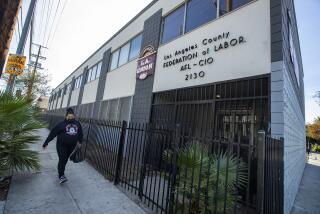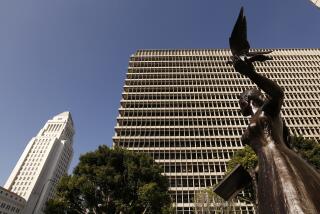Video Expert Testifies at Rape Hearing
- Share via
A video-editing expert testified for prosecutors Wednesday that a 17-minute gap in the recording of a video that allegedly shows three youths raping an unconscious 16-year-old girl does not prove footage was altered.
The testimony was intended by the Orange County district attorney’s office to counter defense arguments that the tape had been tampered with to delete footage showing the girl had consented.
Facing charges stemming from the summer 2002 incident in Corona del Mar are Gregory Haidl, 18, the son of a high-ranking Orange County sheriff’s official; Keith James Spann, 19; and Kyle Joseph Nachreiner, 19, all of San Bernardino County.
The trial is scheduled to start April 19. Defense attorneys have asked Orange County Superior Court Judge Francisco P. Briseno to toss out the tape, the prosecution’s key evidence.
Prosecutors have said their tape is the original that was shot in the garage of Assistant Sheriff Don Haidl.
Both sides will finish their arguments today, and Briseno is expected to issue his ruling Friday or next week.
Video expert David Dustin said a camcorder’s internal time stamp can show the passage of time even when the device is not recording, such as when it is turned off and on during an athletic event.
Internal time stamps that show the passage of 17 minutes with no videotaping simply indicate the device was not recording at the time, he said.
Had the camcorder been recording and 17 minutes of videotape were later cut, he said, that would show on the videotape. It was also clear that 17 minutes of recorded video wasn’t missing because the 60-minute videotape still contained 59 minutes of images, he said.
“Mathematically, it just doesn’t add up,” he said. “You can’t take 17 minutes away and still have 59 minutes of information.”
Defense lawyers questioned Dustin about freeze-frames in the last minute of the video and two-thirds of a second of black frames earlier in the footage, when the recording data displays a different date.
Their own expert witness testified Tuesday that both anomalies show that the prosecution’s evidence is not the original tape and that the courtroom copy probably had been doctored.
In his counter-testimony Wednesday, Dustin acknowledged the freeze-frames could be evidence the video was a copy, but said it was more likely that the glitch was caused by a tape defect or power surge.
The San Bernardino County sheriff’s deputy who collected the tape as evidence said he listened to audio captured during the black frames and heard what sounded like police radio static and the number 43, a designation for another officer on duty that evening.
Deputy Dist. Atty. Dan Hess implied that Sheriff’s Deputy Daniel Futscher may have inadvertently recorded one second of black with the lens cap on as he was trying to show the footage to a detective.
During another witness’ testimony Tuesday, Hess said the short lapse shows no tampering could have occurred.
“There is only two-thirds of a second that frames are black,” he said. “The frames [on either side of that segment] are only one second apart, and everyone is in the same position.”
Defense lawyer John Barnett said after the hearing that he and his colleagues agreed with Dustin’s testimony that the tape could have been edited and no one would know. But the expert’s alternate explanations for the tape’s hiccups were “contrived, theoretical and unsupported,” Barnett said.
“There really is only one explanation,” he said. “That tape is not the original.”
More to Read
Sign up for Essential California
The most important California stories and recommendations in your inbox every morning.
You may occasionally receive promotional content from the Los Angeles Times.










